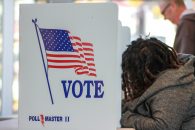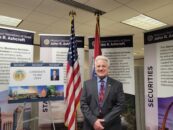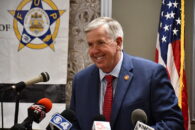Controversy oftentimes creates headlines because drama naturally lends itself to storytelling. When two disparate groups clash on fundamental values, it can lead to a compelling story.
However, too often in media of all kinds, tales of cooperation go unnoticed. It just so happens that this November’s ballot will contain the product of one of the most celebrated collaborations in the state’s history.
The Parks, Soil and Water Sales Tax is up for renewal Nov. 8.
First approved by voters in 1984, the one-10th of one percent tax increase sought to solve two of the state’s pressing problems at the time: soil erosion and an underfunded state park system.
Estil Fretwell, a spokesman for the Missouri Farm Bureau, served as a legislator in 1983 when the law first passed through the General Assembly and helped pass the tax increase.
“The thing that’s so unique about this program is that it brings together environmental groups and agricultural groups working on an issue,” Fretwell said. “Any differences those groups may have are set aside and I think that’s a great testimony to the validity of the need of the parks and soil sales tax.”
Farmers feared soil erosion because the deterioration of topsoil, both in quantity and quality, can have disastrous effects on agriculture. In 1982, 10.75 tons of soil per acre of cropland was being lost each year, according to the USDA 2010 National Resource Inventory. Environmentalists and conservationists wanted protect the state’s other natural resources, especially flora and fauna.
Fretwell said former Rep. Leroy Braungardt of Lincoln County, who passed away in November of last year, proposed the idea of dual legislation after realizing that the support for the two solutions could garner significant support with few naysayers.
Statewide support
Since the law’s passage. The political marriage of those three groups has led to the Parks, Soil and Water Tax being consistently popular each time it comes up for renewal. The tax has succeeded at the polls four times; when voters first approved it in 1984, and when it was renewed in 1988, 1996 and 2006. The last three times, it passed with a lopsided two-to-one margin of victory.
“The diversity of the interest groups represented… certainly lends to the broad support that the sales tax enjoys and certainly lends to the public acceptance and approval of it,” Fretwell said.
This year, the tax, a.k.a. Amendment 1, has no organized opposition.

Brandon Butler, the executive director of the Conservation Federation of Missouri, said the tax shows a unique opportunity of special interest groups “putting aside party politics and working together.”
The list of groups supportive of the measure include everyone from the Missouri Soybean Association to the Missouri chapter of the Sierra Club, groups from respective sectors that traditionally do not see eye to eye.
“When you’ve got the Conservation Federation, Farm Bureau, agricultural, environmental, conservation groups all sitting at the same table for something that makes our state better for residents and non-residents alike, it’s refreshing to see that can still happen,” Butler said. “We don’t see it nearly as often as we should.”
Heather Navarro, the executive director of the Missouri Coalition for the Environment, agreed the measure is a great opportunity for everyone to come together.
What the tax funds
After seeing everything the law accomplishes, it’s easy to understand why diverse groups with different interests champion its passage.
The tax generates roughly $80 million per year in designated revenue. Half goes to state parks and half goes to efforts to combat water and soil erosion. A 2008 study from the University of Missouri’s Food and Agricultural Policy Research Institute also found that the soil and water conservation efforts done by the state made possible in large part due to the tax were “very effective.”
The Department of Natural Resources lists that the state parks now attract 18 million visitors per year, have a 97 percent approval rating from those visitors and is consistently rated in the top four state park systems in the country.
The economic impact of state parks is also significant. DNR estimates that the state parks produce roughly $1.2 billion in local economies and have a 26-to-1 private sector return on public investment.
Navarro adds that contends that one of the most important benefits of the tax was that it allows people in Missouri to do something unique.
“It’s important for Missourians to know that not everywhere in the country can you visit state parks for free,” Navarro said. “Missouri’s at the bottom of the list for a lot of things, but this is something we can all be proud of. This is a huge success, and it’s only possible because voters have been going to the polls since 1984 to make sure we have these parks.”
“I think that’s something we often take for granted.”












